Cheeky Aidan Roger Carron (left) bouncing with health but a week or so later after routine vaccinations (right), he is on life support, rigged up to IV drips, blood and platelet transfusions and heartbeat monitors, clinging to life as a deadly disease ravishes his tiny body, watched by his mother Elizabeth Dupuch Carron and grandmother Eileen Carron.
When she took her healthy infant son for his routine vaccinations in Nassau last July, Elizabeth Dupuch Carron could not have imagined the horror that was to unfold which almost cost him his life. Now safely back home after five months of radical treatment in Miami, Aidan’s anguished mother opens her heart exclusively to The Tribune to tell the harrowing tale of his fight for survival in order to help other families avoid unnecessarily suffering the same frightening encounter with a deadly disease.
A MOTHER has told a heartbreaking story of her infant son’s fight for survival as she pleaded with parents to ensure their paediatricians adhere to the CDC “Vaccination Guidelines and Makeup Schedules”.
Seven-month-old Aidan Roger Carron was rushed to Doctors Hospital’s Emergency Room on July 9, 2016, with a fever of 107.1F. He had acquired a deadly auto-immune disease called Hemophagocytic Lymphohistiocytosis (HLH).
“I’m not sure if my husband, Robert, or I have the words to describe the emotional stress, pain and sense of helplessness you experience when you’re informed that your infant was unnecessarily exposed to such a lethal disease by his paediatrician’s office administering so many vaccinations at once,” Elizabeth Dupuch Carron said in an exclusive interview with The Tribune.
“One minute,” said Mrs Carron, “you’re overjoyed that God has blessed you with such a perfectly healthy, bouncing baby boy. Then, less than two weeks after his vaccinations, you’re in a state of shock when you see your son on death’s doorstep in PMH’s Paediatric Intensive Care Unit.
“Like many Bahamians, we had never heard of HLH. HLH is triggered when killer T cells are provoked (one being by vaccinations) to the extent that they generate a furious immune response. This response ‘eats’ other cells and destroys your vital organs. The disease is so lethal, if not immediately diagnosed and aggressively treated, because of the damage it quickly does to your bone marrow, liver, spleen, heart and brain. You die within two months,” she explained.
“It would be remiss if my husband and I did not share how grateful we are to the team at Miami Children’s Hospital - Hematology/Oncologists Dr Maggie Fader and Dr Bill De Angulo; Andrew Farkas; at the Princess Margaret Hospital, Dr Omala Oblack, Dr Seymour and Dr Bassett; Ed Fields; Lamorn 'King' Rolle; and last, but by no means least, Nurse Laing. Without their efforts, there is no doubt Aidan would not be alive today!
“When Aidan went for his delayed six-month vaccinations he was already seven months old. We were weeks behind the CDC (Centers for Disease Control and Prevention) guidelines because our paediatrician could not secure such essential vaccinations as DTap for babies.
“Our paediatrician’s office informed us that they had been unable to obtain DTap since late summer 2015, and had even decided to write to the American Embassy for assistance. In fact, they had only gotten 25 doses because of a story in The Tribune weeks earlier.
“We, like hundreds of other Bahamian parents, were offered the old DTP vaccine - which despite being used in developing countries has been banned in the USA for 15 years for safety concerns - or wait for the DTap to arrive.
“As our paediatrician’s nurse set up our son’s vaccinations and makeup shots, we were concerned about the number of vaccinations that were going to be administered all at once. We even questioned the nurse as to whether it wouldn’t be wiser to space the vaccinations out?” Mrs Carron said.
“‘Oh, no! It’s fine. We’re catching up’, the nurse nonchalantly informed us. Clearly, they must have been clueless as to how a single needle could irrevocably change our lives and that of many children,” said the tearful mother.
“I left our paediatrician’s office with a heavy heart that day. I recall turning to my husband and his old roommate from university saying: ‘I hope my instincts are wrong. I have a terrible feeling that our son has just been given far too many vaccinations!’
“Within 48 hours, Aidan started projectile vomiting like in ‘The Exorcist’. He then refused to eat solid foods,” his mother sobbed.
“After chatting with other mothers, I was somewhat relieved to hear that reactions like this were not uncommon; especially
after receiving so many vaccinations. However, I soon noticed more ominous signs. Aidan became less playful, started crying uncontrollably and his
amazing, happy, engaging personality faded dramatically.
“On Thursday, with a fever, we decided to take Aidan to see his paediatrician. I informed him that since last week Aidan had refused to eat solid foods. While he was drinking his formula, he now had developed a stubborn fever which had spiked to 104.9F last night,” she explained.
“After examining Aidan, our paediatrician informed us that he could see his throat was inflamed and that he probably had a ‘viral infection’. He advised us to give him Calpol which should ease the effects and that we should be patient and that it would go away in a couple of days,” said his mother, tears rolling down her cheeks.
“Go away! Two days later, I was back at our paediatrician’s office. Aidan was having long periods of inconsolable crying; still refusing to eat solid foods; now vomiting with his formula, with a fever and starting to develop red/purple dots on his hands and feet,” his mother continued. “When I asked the staff what it was, I was told ‘don’t worry, it’s not Meningitis’!
“That’s fine! I replied. But what is it, because I can assure you it wasn’t on my son yesterday?” the concerned mother asked.
“What I didn’t know at the time, but learned later was that this petechaie was a tell-tale sign of dire underlying blood and/or inflammatory issues,” Mrs Carron explained.
“Dr Bassett was the paediatrician on call the Saturday I took Aidan back for the second time. She examined Aidan and decided to take a blood sample. She said she would call with the results the following day. In the interim, she recommended that we up the dosage of Calpol and alternate it with Ibuprofen, every four hours.
“On Saturday night, things really went downhill. We couldn’t believe our eyes when the digital thermometer started blinking red and showed Aidan’s fever had spiked to an unimaginable 107.1F. My husband reset the device, took his own temperature and redid the reading. The same! He even took a photo of it, just to make sure he wasn’t seeing things!” Mrs Carron said.
“We realised time was of the essence. Robert ran downstairs to empty the ice tray and get all the ice from the freezer. My mother-in-law and I readied an ice bath for Aidan,” she continued. “Despite Aidan’s objections, we managed to bring his fever down to a more manageable 103F with the icy water. However, Aidan began squinting and losing focus. He became lethargic, clingy and the dots were spreading up his hands and feet with little red lines becoming very pronounced,” she recalled.
“Early Sunday morning, Dr Bassett called with Aidan’s blood tests. While she assured us that his blood count was normal, she said his lymph nodes were quite high, which was normal for a viral infection. ‘I want you to take my personal mobile in case there are any further developments’,” Mrs Carron recalled.
“I think Dr Bassett was sick of hearing from me over the holiday weekend. But as his fever refused to break, the dots and lines were becoming more and more prominent and going a pale, grey colour so we both agreed it was time to rush to the Emergency Room.
“We were very fortunate that family friend Dr Omala Oblack was the attending physician at Doctors Hospital ER that night,” Mrs Carron recalled. “She immediately took his blood, and, while awaiting the results, asked me to share what had transpired.”
“I remember Dr Oblack interrupting my story to say that we had to retake the tests as the results sent back by the lab could not be correct!
“Dr Oblack explained to me that Aidan’s tests showed that the hemoglobin was 6.1 and his platelets had crashed from a normal level of 150,000 plus to a dangerously low of 14,000 when the nurse came in with a worried look. She told Dr Oblack that the results had come back the same! Dr Oblack immediately excused herself and called in reinforcements,” continued Mrs Carron.
“As you can imagine, I was a somewhat panicked, emotional wreck of a mother by the time Dr Bassett rushed to the ER,” she added. “All I can remember, before my husband grabbed me in his arms to calm me down, was asking Dr Bassett how his blood counts could be so dramatically different within 24 hours?
“Aidan was only semi-conscious by this time. While his eyes were open, he was pale and non-responsive, staring blankly at the ceiling. My husband took me aside so that Dr Seymour, who had kindly rushed in from PMH Paediatric Intensive Care Unit, and Hematologist /Oncologist Dr Sin Quee could examine Aidan with Dr Bassett.
“Dr Sin Quee pulled us aside and said she needed to talk to us. ‘Aidan’s hemoglobin and platelets were so low he’s going to need an immediate blood transfusion. Your infant could have a virus but it may also be Leukemia,’ she explained.
“To determine this,” said Mrs Carron, “we would need to do a bone marrow test. Unfortunately, we would not be able to do this until Tuesday morning as it was our Independence Day and FedEx or UPS are not open to send the specimen away for testing.
“After a somewhat uneventful but sleepless night in Doctors Hospital Emergency Room - along with Dr Seymour, Dr Bassett and other members of the medical team sitting by us - Aidan was transferred to the Paediatric Intensive Care Unit of Princess Margaret Hospital and admitted by Dr Seymour.
“Over the course of the next couple of days, despite the considerable efforts of Dr Seymour, Dr Bassett and Dr Sin Quee, Aidan’s condition deteriorated even further. His platelets dropped to a life threatening 9,000.
“With the assistance of Generali’s Global Assistance Centre, close family friends and this Bahamian medical team, we decided to air-ambulance Aidan to Miami Children’s Hospital Paediatric Trauma Centre on the morning of Wednesday, July 13. Upon arrival, a male nurse sat me down and asked me to tell him how it all began. I informed him that it started on the day of his makeup vaccinations. He went away and relayed my information to a team of Paediatric Hematology/Oncologist experts at the hospital.
“A few hours later, they provided me with an initial diagnosis. Our son had acquired a lethal, blood auto-immune disease called Haemophagocytic Lymphohistiocytosis (HLH). Stunned, I asked him if he had a short version as I couldn’t pronounce the name let alone figure out how to spell it,” Mrs Carron chuckled. “He replied: ‘HLH’.”
“I looked it up online and immediately knew they had found the answer to what was wrong with our son. I called my mother-in-law and husband with the sad news that his vaccinations had caused such a deadly disease.
“Upon arriving at Nicklaus Children’s Hospital (in Miami), I just knew Aidan would survive. The fear had left me. While his diagnosis hit me like a ton of bricks, I knew that in the hands of such leading specialists like Dr Maggie Fader, Dr Bill De Angulo and the world-class facilities of Miami Children’s Hospital, he would pull through. In the chaos of this amazing, state-of-the-art trauma centre, I was finally at peace.
Dr Fader confirmed her initial diagnosis the next day, based upon the blood tests confirming seven out of eight characteristics, said Mrs Carron. “She explained it was a life-threatening disease that, if left untreated, he would die. His survival would depend upon how early they had caught it; how well Aidan responded to aggressive chemotherapy, steroids, cycloesporine and the other meds he would need, and his will to live.
“I said ‘my husband’s on a plane on his way to us. By the way, doc, Aidan’s a fighter, he will survive’.”
“After living day-to-day in the Paediatric Intensive Care Unit and Oncology Ward of Nicklaus Children’s Hospital for weeks, we were eventually allowed to become out-patients. While Robert commuted back and forth between Nassau and Miami for work, I studied and passed the tests necessary to care for - and sterilise - his PICC lines; feeding tubes, pumps, administer the steroids; anti-fungal, anti-biotic medicines and the live-saving steroid injections he might need in the unlikely event of complications, so we could be out-patients.
“Thanks to his angel, Dr Fader, the team at the Oncology ward of Nicklaus Children’s hospital, Nurse Laing, Dr Seymour, Dr Bassett and the invaluable consultation and expertise provided by close family friend Col Dr John Black of the UK, Aidan has beaten the odds. Our son is in remission.
“I wanted to share our little warrior Aidan’s story,” said his relieved, but emotionally exhausted mother, “in the hope that other parents will not have to go through our suffering. My aim is to prevent another family from ever having to endure a similar journey and to try to convince our nation to transform its approach to paediatric healthcare.”
Do you have a medical horror story to tell? Email your tale to ishare@tribunemedia.net
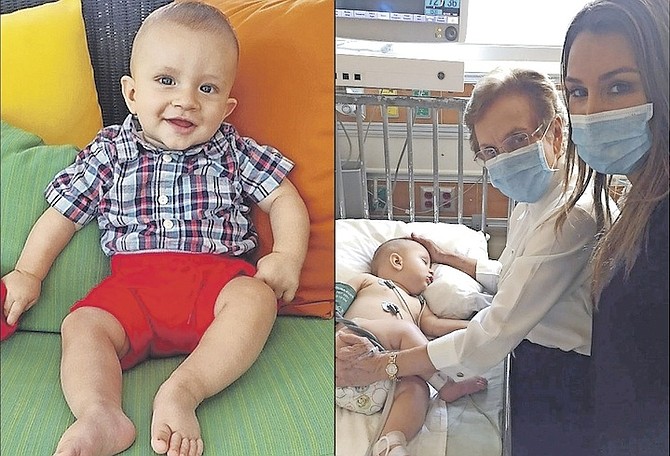
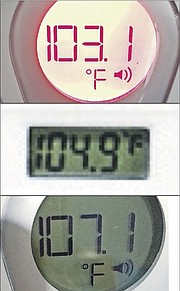
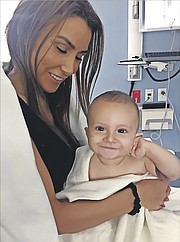
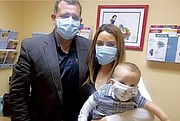
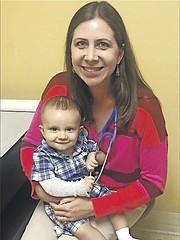




Commenting has been disabled for this item.